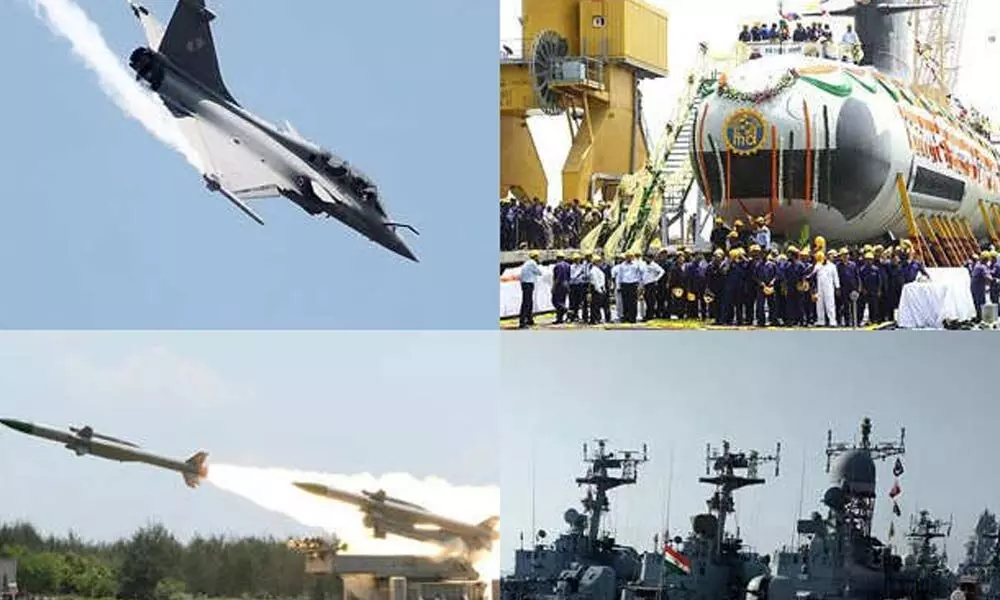India needs to boost defence preparedness
As a result of the Ladakh crisis, India faces a new strategic reality in which China is a clear and abiding adversary
image for illustrative purpose

The New Year of 2022 has come with intriguing messages from China, not in the least for India. On 1 January, the PLA had a special ceremony hoisting their national flag at Galwan, at or near the site of the clashes of June 2021, that led to the deaths of 24 Indian and Chinese personnel. On the same day, Indian and Chinese soldiers exchanged sweets at 10 border posts, including some which are sites of the standoff between India and China in Ladakh. The India-China border, known as the Line of Actual Control (LAC), extends for nearly 2,200 miles and is not demarcated. The two countries have engaged in many border spats, including a war in 1962. But they don't typically last so long. The most recent major crisis, in 2017, went on for two months. That the Ladakh crisis has continued for two years reflects domestic politics in both countries, regional geopolitics, and the nature of the crisis itself.
China is a formidable military power that is swiftly displaying its ability to engage simultaneously on multiple fronts. On the other hand, India remains comparatively low on the economic, military and development. Not only is the Indian economy nearly five times smaller than that of China's (by GDP per capita), but it also has a military that is far smaller and far less technologically advanced compared to China. Although both are nuclear-armed states, India has a gross defense budget of just over $71 billion, which is paled by China's annual military expenditure of $261 billion. This difference is reflected in the vast gap in the number of personnel, army, military and naval equipment, and nuclear warheads that each country maintains. However, as of now, China remains one of the world's fastest growing economies in the world with GDP slated to grow to 8.1 per cent in 2021, but this could slow down to 5.1 per cent 2022. Troubles have been aplenty in 2021 - power shortages hit the country, along with shutdowns related to Covid and supply chain disruptions. The real estate sector which contributes 20 per cent of the Chinese GDP remains crisis-ridden and then, of course, there is the crackdown.
Moving from its long-standing "Act East" policy, New Delhi has swiftly adopted the Indo-Pacific concept into its strategic thinking. Beijing no doubt realizes India's centrality in its competition with the West, particularly the United States, and thus sees India's Indo-Pacific approach and partnerships as a potential threat to its own interests. The abrogation of article 370 and transforming Ladakh into a Union Territory only provides India greater power across the border regions, much to China's dismay. India holds immense potential to be the world's fifth-largest economy by 2025 and the third-largest by 2030, subject to its recovery from the current economic slowdown. New Delhi has also been increasing its military spending in-line with its progressively more active foreign policy.
Beijing will likely be looking to build more accommodative ties with India and project a stronger image. While this does not mean that Beijing will be willing to back down from its position at the LAC or even look to strengthen existing ties, there may be a refashioning or reframing of the India-China rhetoric to tone down its anti-India language within Chinese media and strategic communities. As a result of the Ladakh crisis, India faces a new strategic reality in which China is a clear and abiding adversary. For India, the political relationship is now defined by hostility and distrust, and the LAC will remain more heavily militarised and violence-prone. Given this new reality, India is likely to further defer military modernisation and maritime expansion into the Indian Ocean. In the face of unremitting Chinese naval expansion, India risks losing significant political and military leverage in the Indian Ocean.
The only saving grace might be that China's current trajectory will continue to offer the Indian government plenty of opportunities for course correction in the coming year. India accounts for 3.7 per cent of the global military spending, making it the third highest military spender in the world. The defence expenditure constituted 2.9 per cent of India's total GDP with approximately $72.9 billion spent on defence in 2020.
The defense industry is a strategically important sector in India. It is world's third largest military force and over 1.3 million active personal. The ordnance factories and the defense public sector units produce a wide range of equipment starting from weapons, ammunition, electrical and electronic equipment, aircrafts, ships, vehicles, clothing, and even food items. Is it good enough to ensure India's defence preparedness?


